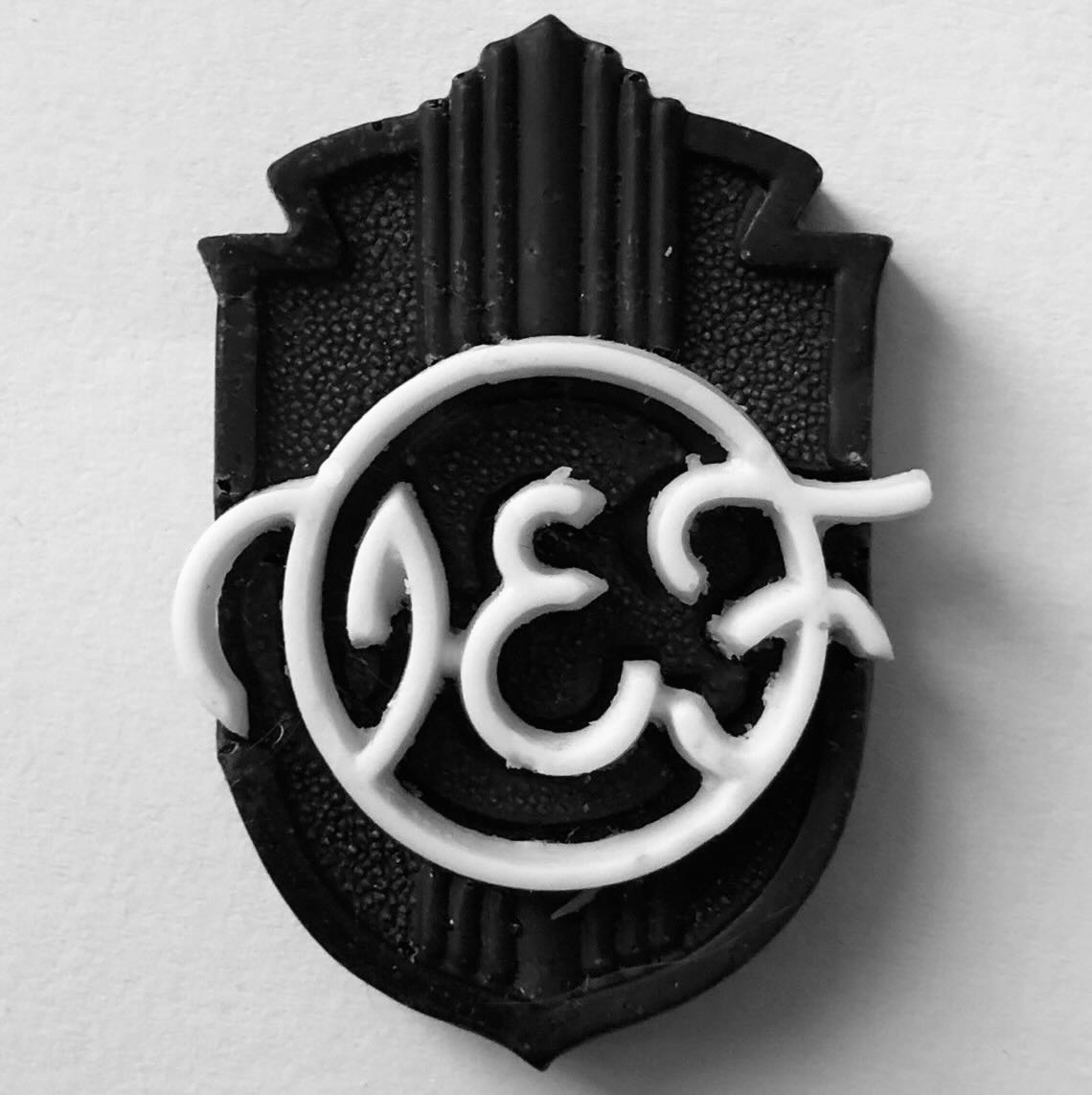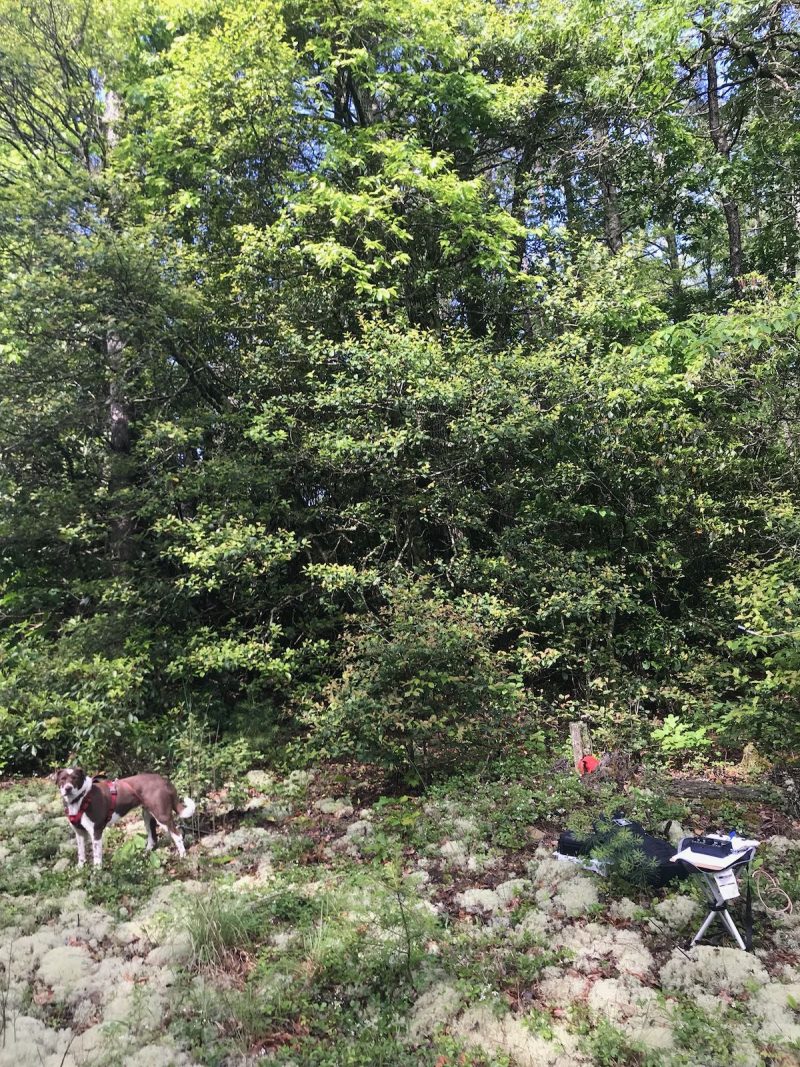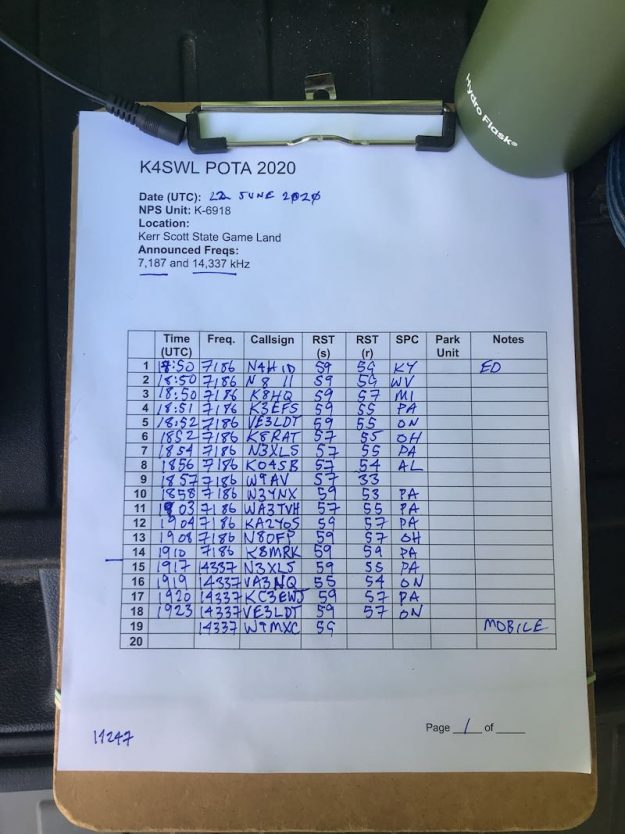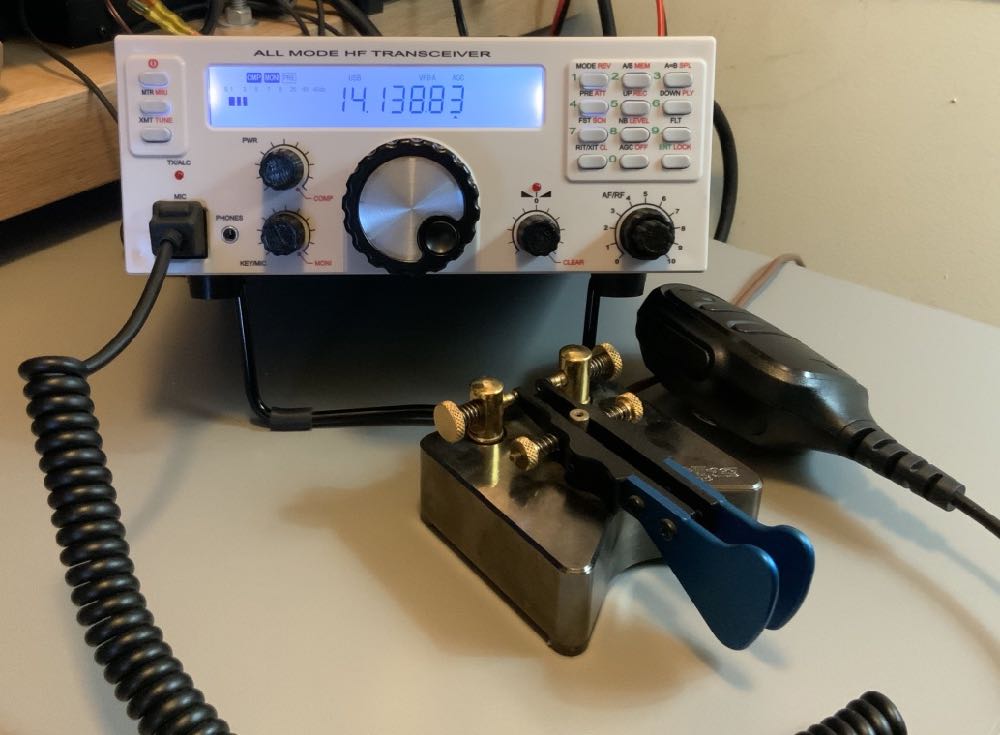 Many thanks to SWLing Post contributor, Mike Hansgen, who shares this video showing how radios were made in the VEF (Valsts elektrotehniska Fabrika) factory in Riga, Latvia in 1936:
Many thanks to SWLing Post contributor, Mike Hansgen, who shares this video showing how radios were made in the VEF (Valsts elektrotehniska Fabrika) factory in Riga, Latvia in 1936:

Many thanks to SWLing Post contributor, Mike Hansgen, who recently mentioned that he’s on the hunt for quality 18650 Li-Ion cells.
Like Mike, I’ve a number of shortwave portables that use 18650 cells, so I understand where he’s coming from: he’d like 18650 cells that are both safe and have a long life. Even though most radios that use 18650 cells have internal chargers, I also assume he’d welcome quality external charger recommendations.
Mike said he’s willing to pay a premium for quality cells but frankly, I’m not sure what to suggest because it seems most of the ones I find are the average eBay and Amazon variety (ie. pretty darn cheap).
I know there are some here in the SWLing Post community who are flashlight enthusiasts and others who are well-versed in the world of rechargeable batteries.
If you have any suggestions, please share them in a comment! Thank you in advance as I’m also keen to hear your comments!
Because I keep my ear to the waves, as well as receive many tips from others who do the same, I find myself privy to radio-related stories that might interest SWLing Post readers. To that end: Welcome to the SWLing Post’s Radio Waves, a collection of links to interesting stories making waves in the world of radio. Enjoy!
Many thanks to SWLing Post contributors Troy Riedel, Dennis Dura, Mike Hansgen, and Eckhard Hensel for the following tips:
Exciting new technologies promise to make radio more accessible and engaging than it has ever been. This includes app-based platforms that enable broadcasters to engage with listeners like never before, software that lets producers edit sound as easily as a text document, and a ‘radio station in a bucket’ that turns a mobile phone onto a broadcast hub.
That’s according to radio futurologist James Cridland, who believes that while innovations like these point to a bright future for the over 100-year-old medium, it’ll take more than adopting cool new tech to succeed in the increasingly splintered and diverse arena that radio is evolving into.“Radio is more than just AM and shortwave, more than big, old fashioned transmitters. Radio is a shared experience with a human connection,” he said during a recent webinar on the future of radio hosted by Fabrik, a South African-developed software platform for broadcasters and community groups.
“That shared experience is something that [streaming music service] Spotify can’t offer. It’s something that somebody’s CD player can’t offer,” he said, adding that this also applied to radio stations who just play non-stop music. “There’s no human connection there. There’s no real shared experience.”[…]
Pittsburgh radio station KDKA will celebrate 100 years of radio broadcasting in November, and Pennsylvania radio amateurs will honor that milestone in a multi-station special event. KDKA dates its broadcasting history to the airing of the Harding-Cox presidential results on November 2, 1920, and the station has been on the air ever since. The special event, which will involve the operation of four stations, will run through the entire month of November.
“More than 100 years ago, many experimenters started delving into a new technology known as wireless, or radio,” said Bob Bastone, WC3O, Radio Officer for the Skyview Radio Society in New Kensington, Pennsylvania. Bastone explained that many of those early pioneers were radio amateurs. “One hundred plus years later, many amateur radio operators are still contributing to wireless technology, while also serving their communities and enhancing international goodwill. Congratulations to KDKA Radio, also known in the early years as amateur radio stations 8XK, 8ZZ, and W8XK.”
Special event stations K3K, K3D, K3A, and W8XK will set up and operate at several locations in Pennsylvania during November. Stations will determine their own modes and schedules. Visit the W8XK profile on QRZ.com for information on certificates and QSLs.
What became KDKA initially began broadcasting in 1916 as amateur radio station 8XK, licensed by the Federal Radio Commission (FRC), the predecessor to the FCC. At the time, amateurs were not prohibited from broadcasting. The small station was operated by Dr. Frank Conrad, who was Westinghouse Electric and Manufacturing Company assistant chief engineer. The transmitter ran 75 W, and the broadcasts gained some popularity in Pittsburgh.
During World War I, amateur radio operation was suspended due to national security concerns. After the war, 8XK was reorganized as a commercial AM radio station, KDKA. The first transmissions of KDKA originated in a makeshift studio on the roof of Westinghouse K Building in East Pittsburgh.
Ham radio clubs participating in the centennial special event include the North Hills Amateur Radio Club in Pittsburgh — which is planning to operate from KDKA’s 1930s’ transmitter site, where an original tower pier still stands. A 1920s’ transmitter site, in Forest Hills, will serve as another operating location. In addition to the North Hills ARC and Skyview Radio Society, other clubs taking part include the Panther Amateur Radio Club, Steel City Amateur Radio Club, the Wireless Association of South Hills, the Butler County Amateur Radio Public Service Group, and the Washington Amateur Communications Radio Club.
Individual radio amateurs will operate from their own stations, and a small group of hams is planning a portable operation from South Park in suburban Pittsburgh.
Stations will invite the public to visit, while observing the required social distancing protocols.
“We amateur radio operators look forward to contacting thousands of other hams around the world to celebrate this huge milestone in the commercial broadcasting industry,” said Bastone. Contact him for more information. — Thanks to ARRL Public Information Officer and Allegheny County ARES Emergency Coordinator Bob Mente, NU3Q, for providing the information for this story.[…]
Radio programming from around the world is available on the internet or through apps.
Americans may not be able to travel the world because of the pandemic, but thousands of foreign radio stations are easily accessible online to bring the world to you.
For Dorothy Parvaz, a radio editor in Washington, D.C., foreign radio was her first introduction to the world beyond Tehran, where she lived until 12. “Listening to radio signals coming in from other countries was just like seeing the world in a way we couldn’t on TV, ” she said. “If I wanted to find music, I went to the apartment downstairs, where one of the kids always got a good signal somehow. We heard Pink Floyd for the first time together.”
Many thanks to Eckhard Hensel who notes that the ATS-909X2 is once again on the Sangean EU retailer site for pre-order. The price is €329.00 and they expect the product to ship in the first quarter of 2021.
Please consider supporting us via Patreon or our Coffee Fund!
Your support makes articles like this one possible. Thank you!
This past weekend my wife suggested that I do a Parks On The Air (POTA) activation. I think she wanted me out of the house so that she could prepare a birthday and Father’s day surprise with my daughters.
Of course, I happily obliged. My motto in French: “Profitez-en bien!” or “Make the most of it!”
Hazel (our dog) made it crystal clear she wanted to join me as well. She’s a great hiking companion and also watches out for black bears while I operate in the forest!
I decided to activate the DuPont State Game Land which was about a one hour drive from my house. Not only was it a new park for me, but it was also an ATNO (All-Time New One) for the POTA program.
I arrived onsite around 10:15 AM local and the parking lot for the forest trail heads was already packed.
It was a gorgeous day and this part of the DuPont Forest is well-known as a great mountain biking spot. I was very lucky to find a place to park.
We’re still in full social distancing mode in North Carolina due to Covid-19, so I had no desire to be anywhere near other people. Hazel and I went off-trail and hiked in about 1/4 of a mile to a nice clearing.
 I set up the EFT Trail-Friendly end-fed antenna and operated with the Elecraft KX2.
I set up the EFT Trail-Friendly end-fed antenna and operated with the Elecraft KX2.
I called for quite some time before I was spotted in the POTA system. After being spotted, I quickly racked up more than the required 10 contacts for the activation to be considered valid.
Although the weather was amazing and my antenna deployment was near-ideal, the bands were rough and unstable, so it was challenging.
Hazel and I packed up, moved out, and made a detour to visit a waterfall near a site I hope to activate in the near future. Here’s a short video:
Since Sunday, I’ve been visiting my hometown to help my parents with a few projects.
Yesterday, I had a four hour break in the day and decided to, of course, benefit from the beautiful weather and activate another new-to-me site. (Can you tell I’m addicted to POTA?)
I picked the Kerr Scott Game Land because it was “only” a 50 minute, rather scenic, drive.
It was quite easy finding a spot to park. Like most game lands, though, you must be prepared to go through off-road conditions. Part of the driveway into the site was incredibly muddy and definitely required at least all-wheel drive.
I set up my station in the shade and easily deployed the end-fed antenna once again.
This activation of Kerr Scott Game Land taught me an invaluable lesson: if you don’t have a “spot” of your activation on the POTA site, it’s like you don’t exist.
The POTA spotting network (much like popular DX spotting networks and clusters) is simply amazing. As a POTA hunter, you open the spots page and you’ll see a list of all of the current operators, their park numbers, and frequencies where last heard.
As an activator, your number one priority when you find an available frequency and start calling CQ is to be spotted on the POTA network.
If I have good mobile phone coverage at my site, I self-spot on the network. Within a few seconds of the spot posting, I’ll typically have a pile-up of a few operators trying to reach me.
If I have cell phone service, but no data, I’ll text my good friend Mike (K8RAT) and ask him to spot me on the network.
Kerr Scott, like most game lands, however, had no mobile phone service whatsoever, so I had no way to self-spot. In fact, this particular site was a good 15 minute drive from the nearest cell phone signal.
I called CQ for 30 to 40 minutes on my announced frequency, at the announced time, but not one single op come back to me.
Since I had just driven 50 minutes to reach this site, there was no way I was going to give up so easily. I had already set up my station in the trunk/boot of my car, so I simply secured it, disconnected the antenna and tied it to a tree branch (so it wouldn’t be in the way), and drove 15 minutes to a spot where I could send a quick message to Mike.
When I got back to the Kerr Scott, I hooked up the antenna, made one call, and had a pile-up of five operators I worked in rapid succession. In fact, I had my required 10 contacts within 8 minutes.
 I do wonder how some of the most adventurous POTA activators manage to post spots while in remote areas. It’s such a key component of having a successful activation, I wonder if they use a satellite phone or satellite messaging device to text a friend for help. (If you’re a POTA or SOTA activator, I’d welcome your comments here!)
I do wonder how some of the most adventurous POTA activators manage to post spots while in remote areas. It’s such a key component of having a successful activation, I wonder if they use a satellite phone or satellite messaging device to text a friend for help. (If you’re a POTA or SOTA activator, I’d welcome your comments here!)
At any rate, I was very pleased to hammer out an activation so effortlessly once I was spotted on the network.
I should add here that CW activators have a secret weapon that’s incredible effective: the Reverse Beacon Network (RBN).
As a CW operator, the POTA spot system will read your callsign from the RBN as long as you have made an announcement on the POTA website in advance or have already been spotted to the POTA website. All you have to do is set up your station at the site and call CQ: the POTA system will auto-generate an accurate spot for you based on the frequency from the RBN. It’s incredibly effective and more than enough reason for me to think I should start doing CW activations.
I can operate CW–in fact, I routinely make CW contacts in POTA and in other contests. However, I’m not quite brave enough to call CQ from a POTA site and work my way through even a modest pile-up.
I need to practice CW more, and I will!
This week, I also take delivery of my Wolf River Coils TIA antenna. I’m looking forward to having the TIA as an option when I need a self-supporting antenna that’s quick to deploy and can handle up to 100 watts when needed.
Post readers: Did you play radio in the field this weekend? I’d love your comments–especially if you simply took a receiver outdoors to enjoy some noise-free broadcast listening!
Please consider supporting us via Patreon or our Coffee Fund!
Your support makes articles like this one possible. Thank you!
 Radio Waves: Stories Making Waves in the World of Radio
Radio Waves: Stories Making Waves in the World of RadioBecause I keep my ear to the waves, as well as receive many tips from others who do the same, I find myself privy to radio-related stories that might interest SWLing Post readers. To that end: Welcome to the SWLing Post’s Radio Waves, a collection of links to interesting stories making waves in the world of radio. Enjoy!
Many thanks to SWLing Post contributors Dave Zantow (N9EWO), Paul Evans (W4/VP9KF), and Mike Hangen (K8RAT) for the following tips:
With all of the strange happenings and excessive “Pop-Up” issues on Angelfire (even more so of late), we have finally decided to move off of that web host and made the move to QSL.NET.
So “Dave’s Radio Receiver Page” new URL is :
Please, for anyone who have web pages that have my web page linked (with the now old URL), I would appreciate the correction. Hopefully this will be the last time I will need to move the page.[…]
Please Note : Are still a few pages that still need to be transferred, but I expect to have that completed over the weekend. This has been quite a bit of work recoding all (again).
Paul Evans notes that Martin Lynch and Sons (ML&S) has just updated the product page for the IC-705 with the following note: “RRP £1199.95 incl 20% VAT. Estimated delivery now July 2020 due to major component shortage.”
Icom America retailers (Universal Radio, Ham Radio Outlet, Gigaparts, etc.) have not published an estimate for availability.
Dear OM and all CW lovers,
I will you proudly inform, that our website http://www.qrqpoint.com is now online.The idea of this meeting place for CW enthusiasts was born by me and the webmaster, Fabian, DJ1YFK, brought it very nice to the web. Thank you Fabian!
Everybody is very kindly invited to be there QRV.
The frequency is 3567 khz. To make a sked or just to say Hello we have a little Shoutbox on the site.
I hope to see you there!
Kindest regards,
Olaf, DL1OP
Pilots on reconnaissance missions could immediately call in their findings
As soon as the first humans went up in hot air balloons in the late 1700s, military strategists saw the tantalizing possibilities of aerial reconnaissance. Imagine being able to spot enemy movements and artillery from on high—even better if you could instantly communicate those findings to colleagues on the ground. But the technology of the day didn’t offer an elegant way to do that.
By the early 20th century, all of the necessary elements were in place to finally make aerial reconnaissance a reality: the telegraph, the telephone, and the airplane. The challenge was bringing them together. Wireless enthusiasts faced reluctant government bureaucrats, who were parsimonious in funding an unproven technology.
[…]One early attempt involved wireless telegraphy—sending telegraph signals by radio. Its main drawback was size. The battery pack and transmitter weighed up to 45 kilograms and took up an entire seat on a plane, sometimes overflowing into the pilot’s area. The wire antenna trailed behind the plane and had to be reeled in before landing. There was no room for a dedicated radio operator, and so the pilot would have to do everything: observe the enemy, consult the map, and tap out coordinates in Morse code, all while flying the plane under enemy fire.
Despite the complicated setup, some pioneers managed to make it work.[…]
Please consider supporting us via Patreon or our Coffee Fund!
Your support makes articles like this one possible. Thank you!
Many thanks to SWLing Post contributor, Mike Hansgen (K8RAT), who shares Tamitha Skov’s latest space weather forecast video:
Many thanks to SWLing Post contributor, Mike Hansgen (K8RAT), who shares Tamitha Skov’s latest space weather forecast video: